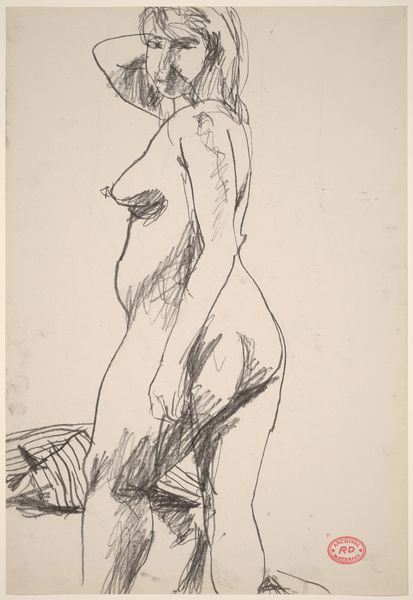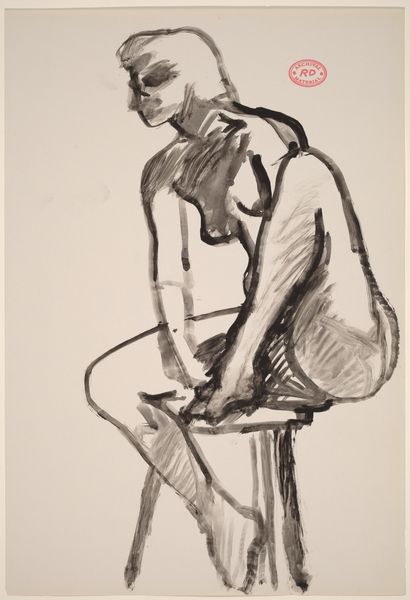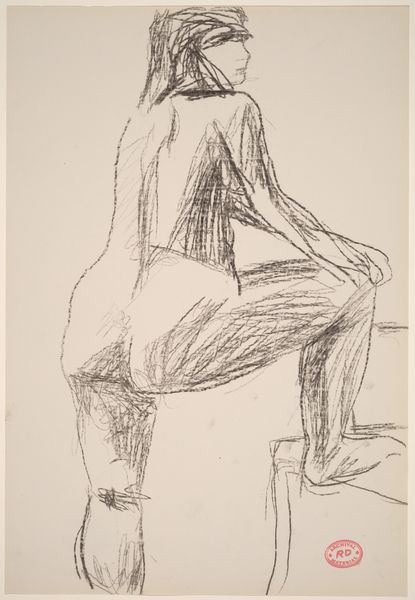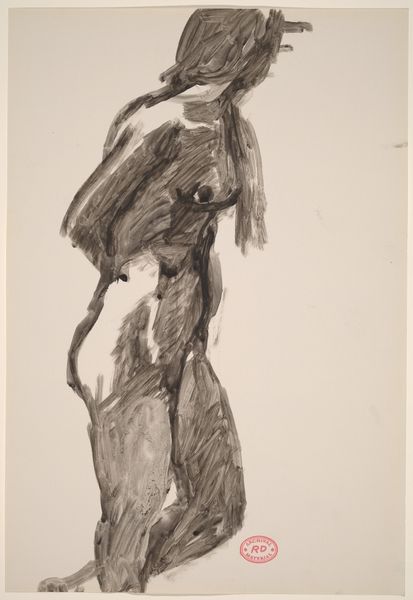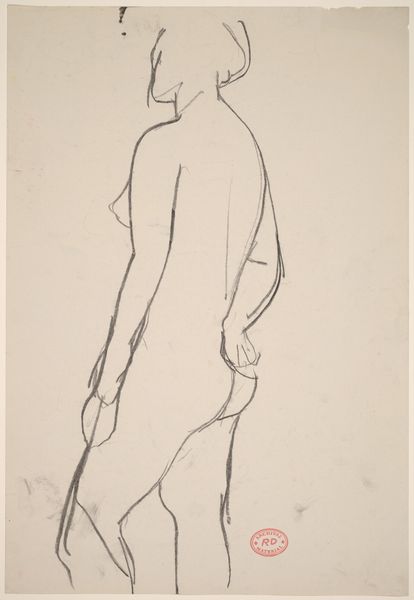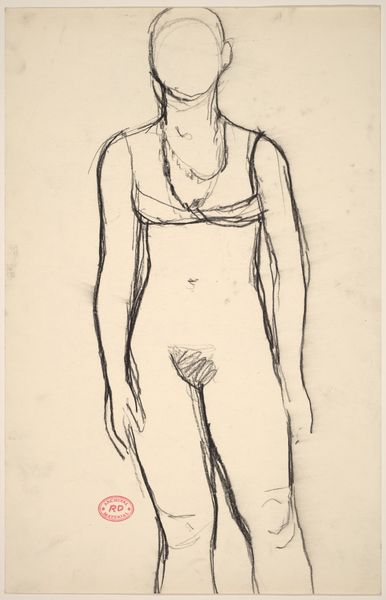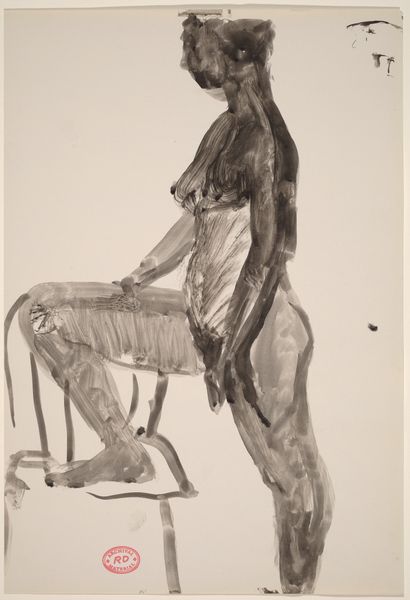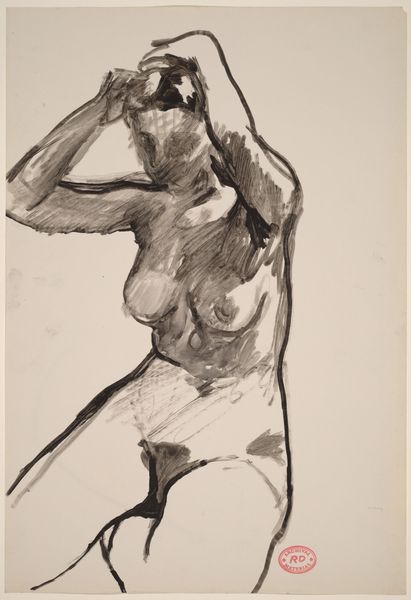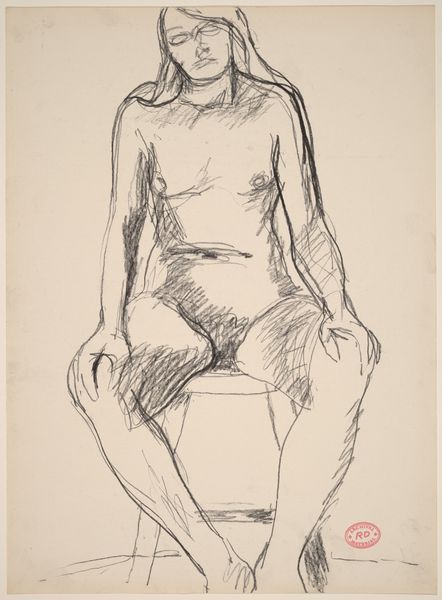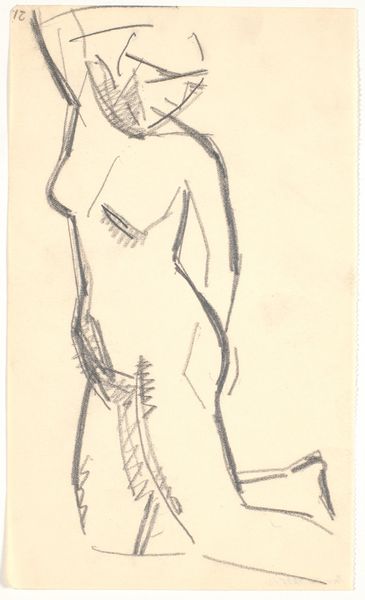![Untitled [standing female nude: side view] by Richard Diebenkorn](/_next/image?url=https%3A%2F%2Fd2w8kbdekdi1gv.cloudfront.net%2FeyJidWNrZXQiOiAiYXJ0ZXJhLWltYWdlcy1idWNrZXQiLCAia2V5IjogImFydHdvcmtzLzRmNDI1OTM2LTYzYzgtNGE1Ni1hMDk0LWQ5ODM5ZWEwMzUwNy80ZjQyNTkzNi02M2M4LTRhNTYtYTA5NC1kOTgzOWVhMDM1MDdfZnVsbC5qcGciLCAiZWRpdHMiOiB7InJlc2l6ZSI6IHsid2lkdGgiOiAxOTIwLCAiaGVpZ2h0IjogMTkyMCwgImZpdCI6ICJpbnNpZGUifX19&w=3840&q=75)
drawing
#
drawing
#
imaginative character sketch
#
light pencil work
#
fine art illustration
#
ink drawing
#
pencil sketch
#
cartoon sketch
#
bay-area-figurative-movement
#
pencil drawing
#
ink drawing experimentation
#
arch
#
portrait drawing
#
watercolour illustration
Dimensions: overall: 40.6 x 27.9 cm (16 x 11 in.)
Copyright: National Gallery of Art: CC0 1.0
Curator: This is an untitled drawing by Richard Diebenkorn, likely created between 1955 and 1967. What strikes you about it? Editor: There’s an incredible sense of immediacy. It feels raw, like the artist quickly captured a fleeting impression of the figure. It also looks like a simple sketch that's been transferred on a high end art media with a personalized artistic touch. Curator: Precisely. Diebenkorn’s process often involved a search for the essential form. Look at the linework – economical, yet expressive. He's not just depicting a body, but also the act of seeing and translating observation into graphic marks. The negative space becomes as important as the lines themselves. Editor: I agree. Consider the social context; nude studies have a long history in art, but Diebenkorn is avoiding the academic tradition here. It is clearly designed for experimentation rather than following set aesthetics standards. We're not presented with idealized beauty. This is something more casual, more candid, potentially designed for a specific location? Curator: Exactly. How were such sketches displayed or valued during this period? Were they considered finished works in their own right or primarily studies for larger compositions, impacting their presentation in gallery or museum contexts. This raises important questions about the commodification of artistic process. Furthermore, the means of production – simple paper and ink or pencil – highlights the accessibility of artmaking. There’s a lack of pretension here, connecting to a broader movement in art towards a more democratic, less rarefied, approach to materials and artistic creation. Editor: The starkness of the drawing almost neutralizes gender or any sort of explicit social commentary too. This aesthetic aligns with postwar abstraction and the rejection of overtly representational or narrative approaches in art institutions at the time. There’s an interesting tension between the historical context and this seemingly spontaneous moment. The absence of contextual details actually highlights its openness to interpretations. Curator: I find myself appreciating Diebenkorn’s skillful economy in his mark making more deeply, understanding how this single image touches on artistic choices as well as the historical environment in which it came into being. Editor: Yes, viewing it with an eye towards how it fits into the larger sociopolitical landscape definitely colors my experience of this intimate and seemingly casual depiction.
Comments
No comments
Be the first to comment and join the conversation on the ultimate creative platform.
